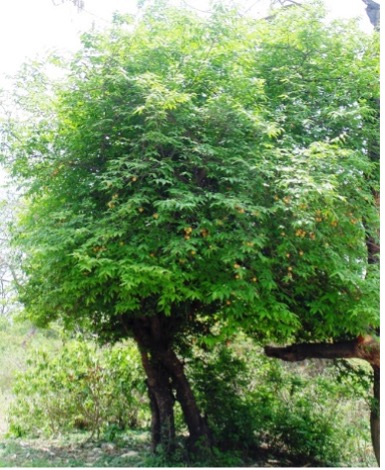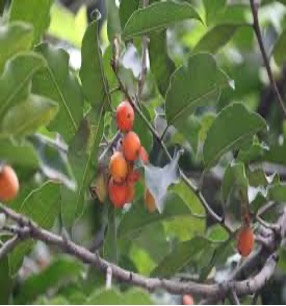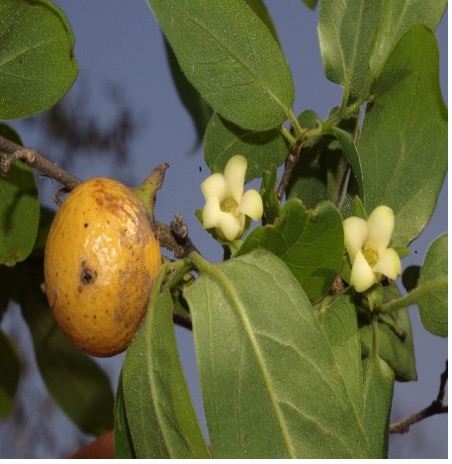HERBAL GARDEN
Vivek college of Ayurvedic Sciences & Hospital Bijnor UP
विषतेन्दु



Classification
Synoyms
Vistendu (Sanskrit)
Tinduka
Krsnatinduka
Kendu (in Odisha)
Tendu patta (leaves used for bidi-making)
Habit
Medium-sized deciduous tree
Habitat
Grows in dry deciduous forests of India, especially in central and southern regions. Found up to 1200 m elevation in hilly areas. Common in Madhya Pradesh, Odisha, Chhattisgarh, Maharashtra, and Jharkhand.
Morphology
- Height: 6–15 meters.
- Leaves: Simple, alternate, oval-oblong, leathery texture.
- Flowers: Small, unisexual, greenish-white, males in clusters, females solitary.
- Fruit: Berry-like, globose, 2–4 cm in diameter, dark brown when ripe.
- Bark: Greyish-brown, slightly rough.
- Wood: Hard, dark-colored, heavy and valuable.
Chemical Composition
Tannins , Diospyrin , Flavonoids , Terpenoids , Lignins , Alkaloids , Carbohydrates , Phenolic compounds
Guna-Karma
Rasa-Kashaya , Madhura
Guna–Ruksha , Laghu
Virya-Sheeta
Vipaka–Katu
Karma –Stambhana
, Raktasthambhaka
, Vranaropaka
, Grahi
, Krimighna
, Shothahara
Doshakarma –Pitta-Kaphahara
Medicinal uses
Fruits and bark are used in diarrhea, dysentery, and bleeding disorders.
Leaves and fruit pulp helpful in skin diseases and wounds.
Fruits improve digestion and act as grahi (absorbent).
Bark decoction used as mouthwash for ulcers and gum issues.
Fruits used in diabetes and liver conditions in folk medicine.
Useful Part
Fruit, Bark, Leaves
Doses
Churna (Powder): 3–6 g
Kwatha (Decoction): 20–40 ml
Important Formulation
Tinduka Twak Kwatha
Shloka
तिन्दुकं कषायं तिक्तं वातपित्तहरं लघु |
गुल्मातिसारकुक्षिशूलकृमिप्रशमनं हितम् ||
Hindi Name
काला तेंदू
English Name
Indian Persimmon / Coromandel Ebony
Botanical Name
Diospyros montana Roxb
Family
Ebenaceae